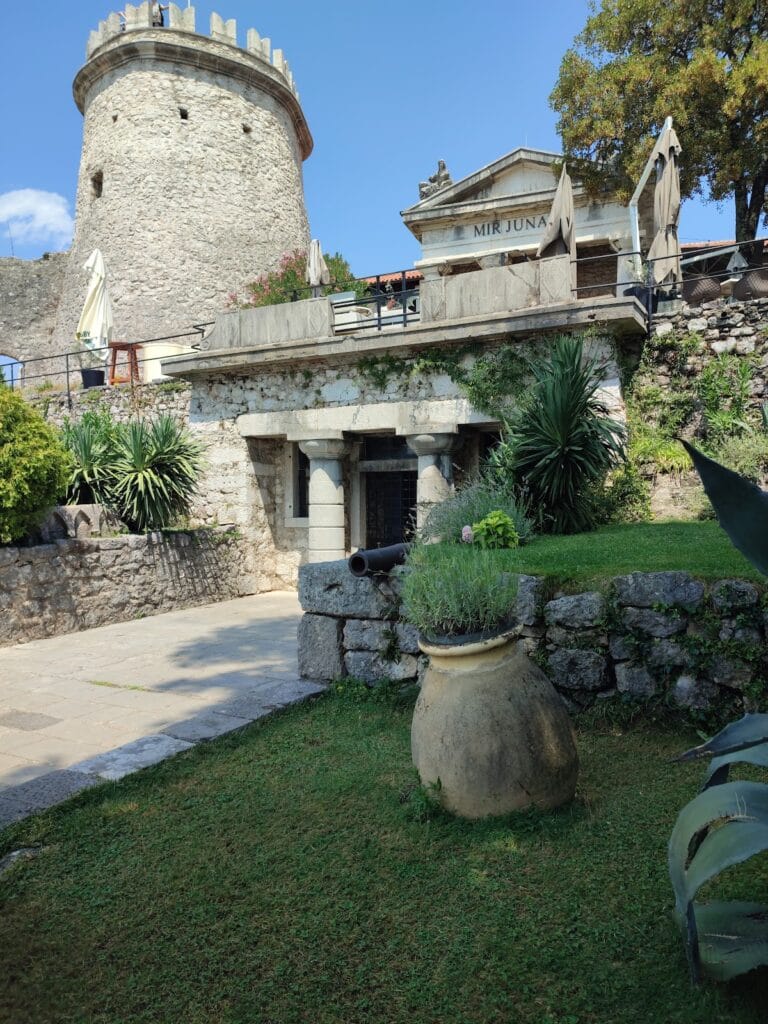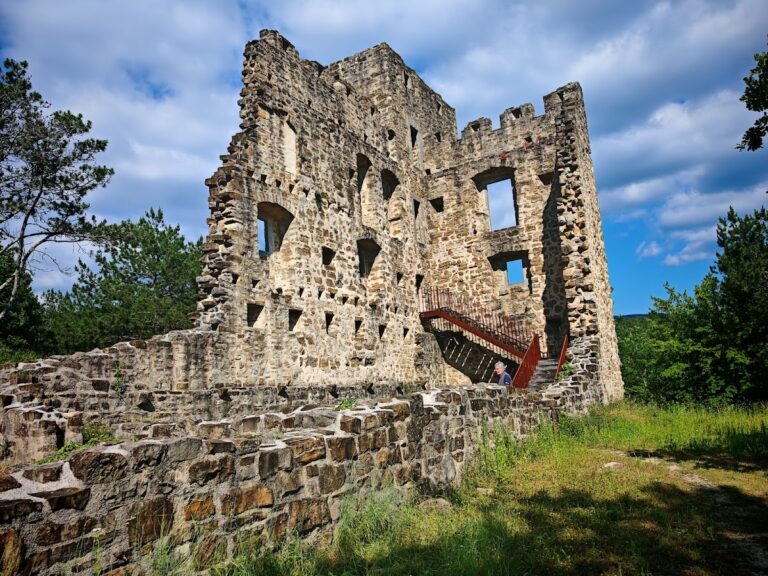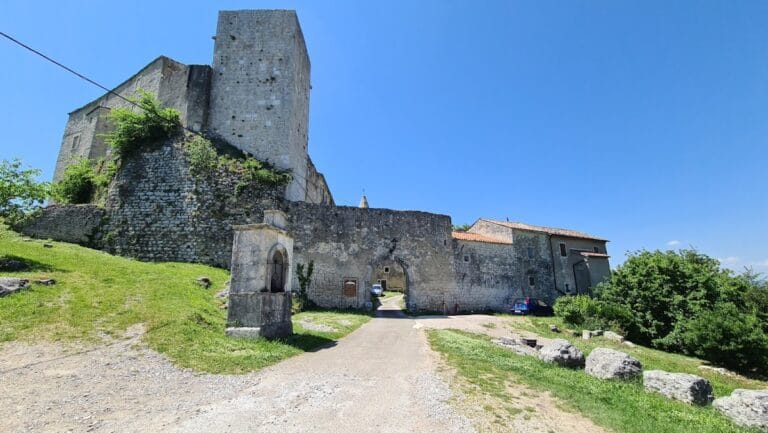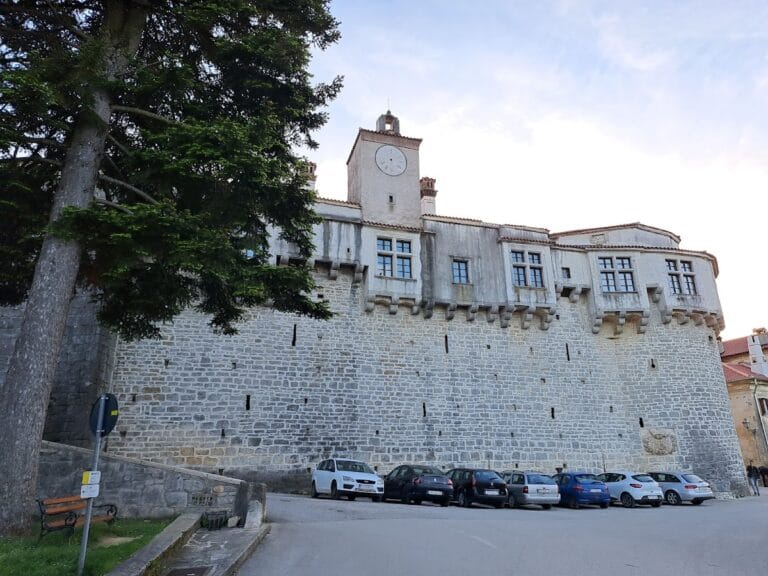Grobnik Castle: A Historic Fortress in Čavle, Croatia
Visitor Information
Google Rating: 4.7
Popularity: Low
Google Maps: View on Google Maps
Official Website: www.grobnik-katedra.hr
Country: Croatia
Civilization: Medieval European
Remains: Military
History
Grobnik Castle is located in the municipality of Čavle, Croatia, and was originally constructed by the Counts of Krk, a noble family who later became known as the Frankopans. The site sits above the settlement of Grobnik and occupies an important strategic position in the Vinodol region.
The area first hosted a Liburnian fortified settlement before the medieval period. In the first half of the 13th century, the medieval fortress was likely built atop these earlier fortifications. The castle and its lordship were integrated into the Vinodol County and were first mentioned in the Vinodol Code of 1288, an important early legal document written in the Glagolitic script, reflecting the governance practices of the time.
Ownership remained with the Krk counts for approximately 130 years. During the late 14th and early 15th centuries, the influential nobleman Nikola IV Frankopan mortgaged the castle in 1416 but repurchased it by 1419. Following his death in 1432, unresolved inheritance disputes delayed the transfer of property until 1449, when Grobnik was passed to Štefan II Frankopan.
From the late 15th century onwards, Grobnik Castle served a defensive purpose during Ottoman advances into the region. After the 1493 Battle of Krbava Field, the castle provided refuge for Modruš canons, a religious group seeking shelter from raids. In 1522, local leaders successfully resisted a Turkish siege, demonstrating the castle’s strategic military role.
Throughout the 16th and 17th centuries, the castle’s ownership fluctuated between branches of the Frankopan and Zrinski families. These periods were marked by complex succession disputes and interventions by royal authorities. The fortress was managed by captains and administrators appointed by its lords, including figures such as Julij Čikulin and Franjo Frankulin.
In 1670, following the failed Zrinski-Frankopan conspiracy against Habsburg rule, imperial forces seized Grobnik Castle and plundered it. Afterwards, ownership transferred to the Austrian royal chamber. Subsequently, in the 18th century, it passed through the hands of the Perlas counts in 1725, the Bathyany family in 1766, and ultimately to the Thurn und Taxis family until the property was confiscated by the state in 1945.
After a gradual decline starting in the late 18th century, the castle fell into ruin. Restoration efforts began in the 1970s and were largely completed by 1992, preserving Grobnik Castle for cultural and ethnological purposes.
Remains
Grobnik Castle is built with a triangular floor plan, shaped to take full advantage of the commanding position over the Grobnik field and surrounding borderlands. It is enclosed by defensive walls, which were mainly constructed during the 15th through 17th centuries to strengthen its fortifications. The castle’s thick stone walls and towers reflect the military architecture typical of the late medieval period in the region.
At the southwestern corner, a tower contains the Chapel of St. Helena. This chapel retains its Renaissance-style doorway, a key architectural detail showcasing the period’s influence on the castle’s interior religious spaces. The chapel’s position within the tower suggests it served both spiritual needs and defensive functions.
Within the inner courtyard, a Gothic-style well is a notable feature. This well is decorated with the coats of arms belonging to the Frankopan family and the counts of Krbava, dating back to the 15th century. The well’s preservation offers insight into the castle’s role as a noble residence, as well as a functional military stronghold.
The walls and defensive structures have been maintained and restored to good condition through efforts that began in the 20th century. Today, the castle’s layout and fortifications are clearly legible, highlighting its historical evolution. The site also includes spaces repurposed for cultural activities, with ethnographic displays and a gallery housed within its preserved chambers.
Grobnik Castle is situated near the central area of the settlement, closely neighboring the parish church. Its location provides a wide view over the surrounding land, a strategic advantage that influenced both its military importance and its role in local governance throughout medieval and early modern history.







